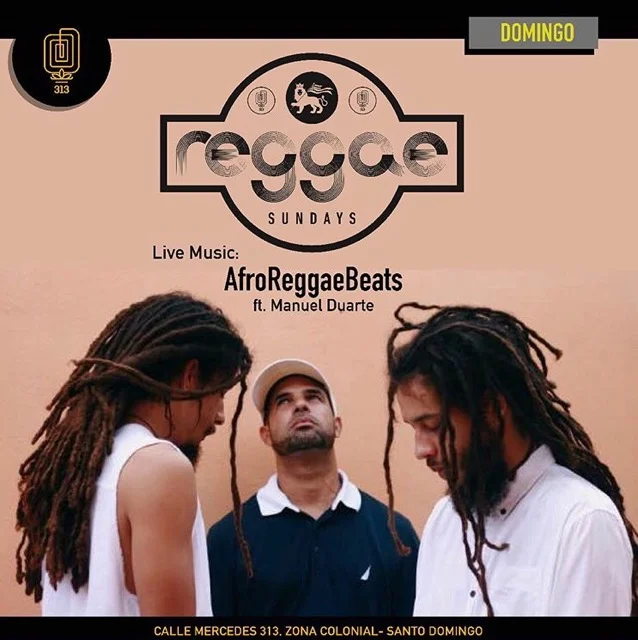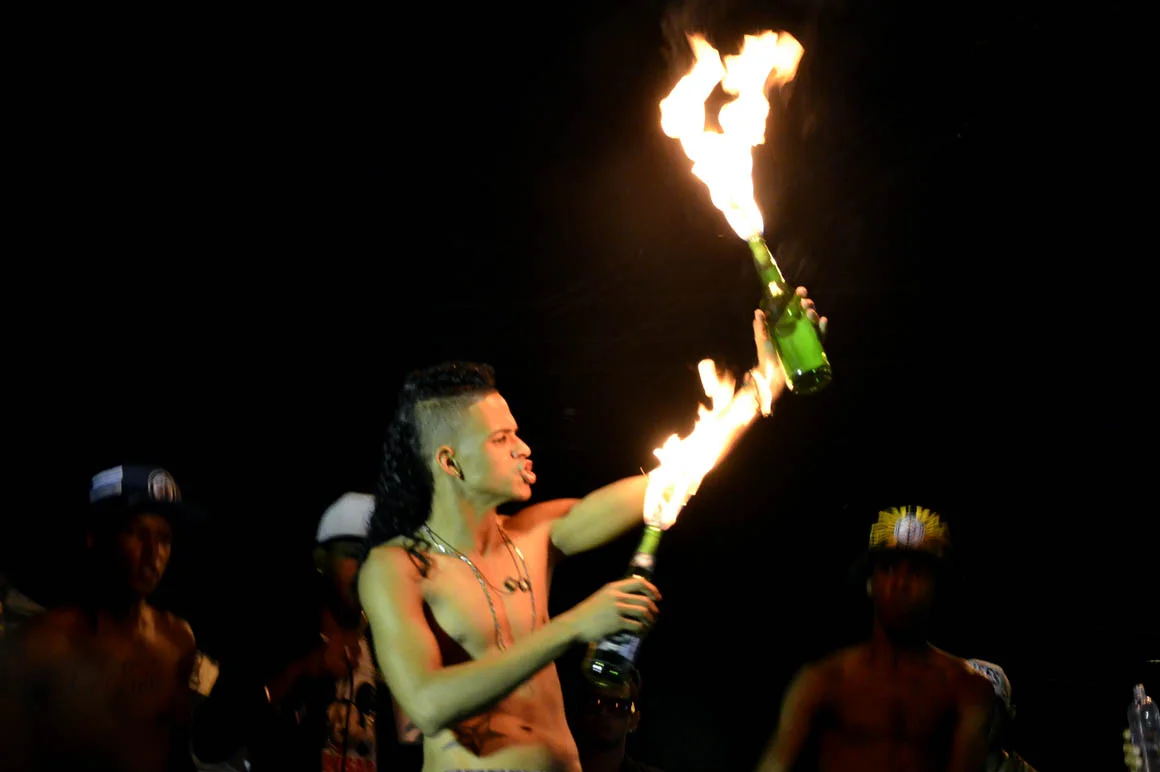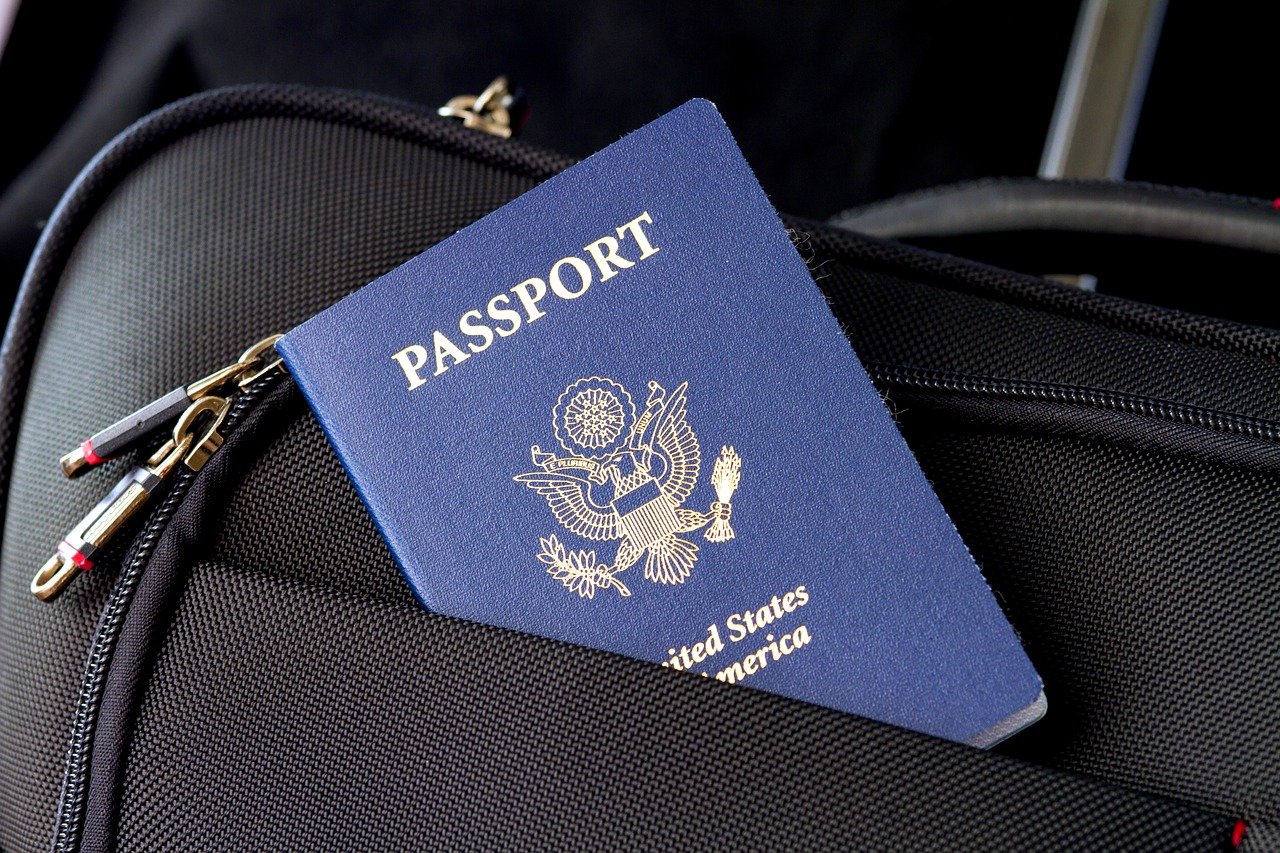By Amaury Rodríguez and Nelson Santana
March 27, 2018
Second in a series of articles that focus on research of Dominican history and society. Read Part 1 of this series here.
It’s Spring and you want something real, exciting and worth pursuing. You are in love. You want to move on from the traditional historical narrative. Moya Pons doesn’t matter anymore because in all truth, he never did. So you came up with some ideas, an outline of Dominican topics to pursue while flipping the bird o la gallina to all those who ignore your existence and that of others and guess what?
You know who you are!
Here are fifteen research topics on music (some serious, some fun and others obscure) that we/you should pursue whether you’re Dominican or not. ¿Vale? Here we go:
1
This Could be Love: Reggae, La Espiral and the Making of a Music Scene
An announcement for Reggae Sundays at La Espiral. Photo: Screenshot via Instagram.
A look at a reggae concert venue known as La Espiral located in Santo Domingo’s Zona Colonial or Old Colonial City. One of the questions that researchers might want to investigate is the emergence of a local reggae culture and the impact of Rastafarianism in the Dominican Republic vis-à-vis state-sponsored social repression that criminalized African dreads and other hairstyles associated with Afro-Caribbean pride and consciousness movement.
2
Seven Days that Shook the World: Protest and Music During the Balaguerato
This will shed light on cultural resistance during the Balaguer regime in the 1970s by researching the legendary and seminal 7 días por el pueblo concert. Researchers will look at the impact of Nueva Canción movement and the folklorista inquiries of Dominican social scientists, musicians and activists from the political left.
3
Fefita La Grande as a Storyteller: Mujeres que gritan and Rural Cultural Production
An inquiry into the musical language of Fefita La Grande as well as her use of storytelling to keep alive rural, regional traditions and idiosyncrasies that run counter to mainstream cultural production and which often ignores the countryside. In addition to surveying the intricacies of the music of this iconic Dominican artist, researchers will study traces—or lack thereof— of social commentary in her work and its significance in the cultural production of Dominicans.
4
Cubanidad, Africanidad and Dominicanidad in Cuco Valoy’s Musical Palette
An investigation into the roots of Cuco Valoy’s musical palette. This study will not only shed new light into his work, but also map out musical linkages between Africa, the Dominican Republic, the Caribbean and the rest of the Americas.
5
Raperxs libertxs: Rap Music in Los Minas
A rap showcase in Los Minas in 2014. Photo: Orlando Ramos via Acento
This will produce a thesis on the seminal rap and hip-hop music scene in a multi-cultural working class neighborhood known as a territory free of slavery during colonial times.
6
Singing in the Key of Love: Sonia Silvestre, Nueva Canción and Political Commitment
Image of Sonia Silvestre from the 1974 album Sonia Canta a los poetas de la patria [Sonia Sings to the Poets of the Homeland].
A study that will explore the work of the late singer Sonia Silvestre who instilled her own personal and political interpretation to love songs beginning in the tumultuous decade of the 1970s.
7
Arianna Puello and Her Konciencia Rap
The musical production of this Spanish rapper of Afro-Dominican descent is at the center of this study. Researchers will interrogate her work through the lens of migration, feminism,race and class and diasporic studies.
8
Disco Lights and Kompa Beats: Wilfrido Vargas and the Joys of merengue clasico
This study will discuss the musical inspirations, obsessions and creations of one of the most important Dominican and Caribbean composers that sprung onto the scene in the 1980s. Investigation into song structure, lyrics and dance choreography will trace the influence of both disco, hip-hop and Haitian kompa music in the musical landscape of 1980s merengue music.
9
Félix Cumbé, «El gatico» and the Making of a Haitian-Dominican merenguero
One of the aims of this research project is to look deeper into the influence of Haitian kompa in Dominican music particularly the merengue genre known as merengue clásico. This research will examine the life, work and legacy of Félix Cumbé, a seminal merengue and bachata artist who migrated to the Dominican Republic from Haiti at the age of 13 and whose name first entered the public consciousness in a song by musical merenguero star Fernandito Villalona. The study will analyze Félix Cumbé’s signature song «El gatico» among others, and his recent incursions into bachata music. The study will also explore the contradictions of Dominican society where racist anti-Haitian ideology prevails amid Haitian-Dominican collaboration and solidarity among ordinary people.
10
The Political Economy of Merengue: Music Consumption via El Show del Mediodía
This will research the popular TV show El Show del Mediodía and how it helped to popularize merengue music via the television medium.
11
“La Escuelita” de música in La Zona Colonial
This particular study will delve into the informal music school in the Dominican Republic’s historic Colonial Zone. The Escuelita de Música del Conde is a cultural space in la calle del Conde where aspiring musicians meet with talented and veteran musicians alike to learn music: music theory, how to play an instrument, to sing, talk music, and engage in other music-related topics. This is a free project open to the public and run by a local community of artists.
12
From the Strip Club & Barbershop to Sold-out Concerts: The Improbable Rise of Dominican Social Media Stars Cardi B and Bulín 47
This particular study will look at the meteoric rise of humble Dominican social media stars including Cardi B, Bulín 47, ChikyBomBom, Amara La Negra, and other Dominican social media stars. The study, however, will focus on two of the biggest Dominican social media stars, Cardi B and Bulín 47, and will analyze their unique paths toward stardom. Both Cardi B and Bulín 47 not only broke the “Dominican Internet” with their outrages videos, captured the hearts of many through their genuineness.
13
Normandía Maldonado and the Women Who Spearheaded a Movement that Led to the Transplantation of Dominican Culture in New York
An often acknowledged yet overlooked as an integral component of Dominican migration to the United States are the tangible and intangible aspects of Dominican culture preserved and manifested by Dominican women. Not only will this study note the women who led this cultural revolution in New York and other U.S. territories, but it will also place them at the center of Dominican organizing in New York and argue that Dominican culture served as the base/principal factor in building the political power among Dominicans that exists today. Normandía Maldonado and other women used their cultural heritage as a means to preserve Dominican culture in a foreign land. In Maldonado’s case, she played a critical role in the founding of Centro Ballet Quisqueya and erection of the Juan Pablo Duarte statue in New York among other things.
14
Visa por un sueño: Traveling Musicians Who Trade Dominican Passport for a U.S. Dream
Since learning about the “American dream,” many Dominicans wish to travel to the United States. Over the years, some struggling artists and non-artists in the Dominican Republic have obtained visas as part of Dominican groups, yet they overstay their visa and opt to remain in the United States. The biggest example is merengue típico legend Fefita La Grande who received a harsh punishment (eventually pardoned) for supposedly being part of a ring that provided visas to non-musicians so that they could travel and stay in the U.S. On the other side of the spectrum are actual musicians who travel to the United States as part of a popular act and decide to overstay their visa rather than return to the Dominican Republic as a means to escape poverty and provide a better life for their families. Music is an integral part of the lives of most Dominican people. Taking music away from a musician could be severe a punishment as sending them to prison. This study will analyze both types of migrants, the ethics, and their reason for making such choices.
15
Cantando por Dios or cantando for the Money?
Music and worship go hand-in-hand and are almost interchangeable. In fact, music is used as a tool to grow congregations as the rhythm of the music is enticing for worshippers. This blasphemous study aims to make sense of the Dominican Christian music scene, a profitable global business. This work will explore the history of Dominican Christian music and the profits that derive from mega-concerts, music sales, and other related matters.
___
Ten Research Ideas About Dominicans That You Should Pursue (Part 1)
Send any feedback to esendom@esendom.com



![Image of Sonia Silvestre from the 1974 album Sonia Canta a los poetas de la patria [Sonia Sings to the Poets of the Homeland].](https://images.squarespace-cdn.com/content/v1/57c493a43e00be5b5640504c/1521851650234-PL1Y8N3HZ4W1ND5YV0MR/so.jpg)

